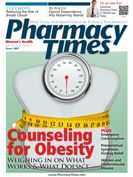Publication
Article
Pharmacy Times
Care Transitions and the Pharmacist
To reduce the number of hospital readmissions, involve pharmacists in decision making.

To reduce the number of hospital readmissions, involve pharmacists in decision making.
Much attention is being placed on assuring appropriate patient care as patients are transitioned between care settings. During these times, it seems that patients are more vulnerable. Of special concern are hospital readmissions, because they are both costly and often avoidable. They serve as a reminder that our current health care system is very dysfunctional because we often provide care in silos that don’t communicate with the other silos.
If you were interested in addressing the problem of reducing the number of avoidable readmissions, what could you do? Here is what the Patient Protection and Affordable Care Act will do starting this year. It will begin reducing hospital reimbursement by 1% if target goals are not met for certain diseases. This will increase to 3% in 3 years. This Hospital Readmission Reduction Program will hit hospitals in the pocketbook, so all hospitals are looking for ways to reduce unnecessary readmissions.
As the following case study illustrates, drug therapy is often the cause of a readmission.
“HB is a 76-year-old man who was admitted to the hospital because of weakness and shortness of breath. He has a long history of atrial fibrillation and his heart rate had been well controlled on a high dose of diltiazem combined with metoprolol and digoxin. He was on warfarin to prevent a stroke. It was discovered during this hospitalization that his heart rate was falling into the 20s, causing his severe weakness and leading to a gathering of fluid in his lungs. As a result, his diltiazem medication was cut in half and digoxin was stopped. HB’s heart rate came back to normal and he felt well. When he went home, he thought his warfarin was the medicine stopped rather than the digoxin, even though it was written down, so within 3 days he came back to the hospital, weak with a heart rate of 36 and unable to speak or move his right hand. Without the warfarin, he had had a small stroke. Warfarin was restored and the digoxin was stopped and his condition improved. He went home, where he lives alone, but he had some persisting weakness and he fell. His daughter knew of a good assisted living facility and arranged for HB to stay there until he felt stronger. The facility called HB’s outpatient doctor who put him on the medicines he was on before his 2 hospitalizations, as he hadn’t been informed of the hospital admissions during or after. HB passed out during his third day at assisted living and was readmitted to the hospital with a heart rate of 24 and fluid in the lung.” (Cykert S. NCMJ 73(1):31.)
I share this case to illustrate just how easy it is for care mismanagement to occur when health care providers are not integrated into a seamless system of care. Where was the pharmacist in this case? Should there have been an expectation for a pharmacist to play a role in this scenario? Because there was probably a different pharmacist providing medication in each of the 3 settings mentioned in the case—home, hospital, and assisted living—which pharmacist should have taken the lead to prevent or help resolve the issues?
These are not easy questions to answer. Nor is there a one-size-fits-all answer. But as we enter a period of dramatic change in where and how we deliver care during the rest of this decade, pharmacy must find workable answers to these questions—or we may be left out of the solutions. Now more than ever pharmacists must be thinking what they can do to help HB and all the other patients like him. Unless pharmacists are at the table where answers to the health care problems are being debated, pharmacy may not be part of the solution, I’m afraid.
We have always needed pharmacists to join and support their state and national pharmacy organizations. The problems that we are addressing today are bigger than any individual practitioner and larger than any single profession. For me, a strong organization working cooperatively with other professional organizations is what’s needed. Strength comes from dollars and money comes from membership. If you are not a member of your state and a national pharmacy organization, join them today. It may help determine if you have a job at the end of this decade.
Mr. Eckel is a professor at the Eshelman School of Pharmacy, University of North Carolina at Chapel Hill. He is past executive director of the North Carolina Association of Pharmacists.







